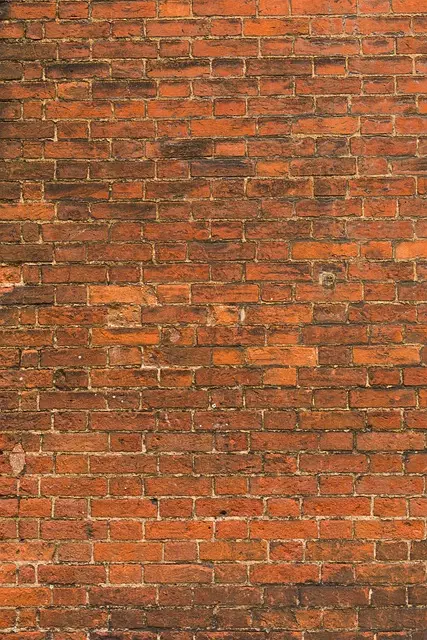Grout sealing is crucial for maintaining tile surfaces, preventing mold growth and stain absorption due to grout's porous nature. By creating a protective barrier, grout sealing repels dirt, extends surface lifespan, and enhances aesthetics in tiled areas, especially in humid environments. Choosing the right sealant (water-based or silicone) based on tile/grout type, traffic patterns, and moisture exposure is key. Proper sealing involves cleaning, applying sealant with full joint coverage, and curing before exposing tiles to moisture; maintaining this process every 6-12 months prevents mold and stains effectively.
Protecting your tile and grout from stains and mold is essential for maintaining a clean and healthy home environment. This comprehensive guide delves into the crucial role of grout sealing as a powerful tool in preventing unsightly marks and promoting hygiene. We explore the vulnerabilities of grout, the benefits of waterproofing barriers, and expert tips on choosing and applying sealants effectively. By following these strategies, you can safeguard your tile and grout, ensuring longevity and preserving the aesthetic appeal of your spaces.
Understanding Grout and Its Vulnerability to Stains and Mold

Grout, often overlooked, plays a crucial role in maintaining the aesthetics and longevity of tiled surfaces. It is the material that fills the spaces between tiles, providing both structural support and visual appeal. However, grout can be particularly vulnerable to staining and mold growth due to its porous nature. This porosity allows liquid stains, such as those from coffee, wine, or grease, to penetrate deep into the grout lines, making them difficult to remove without proper treatment.
Moreover, moisture trapped within the grout provides an ideal environment for mold spores to thrive. Over time, this can lead to unsightly discoloration and even health concerns. To combat these issues, grout sealing is a highly effective method. Sealing the grout not only prevents liquid stains from penetrating but also creates a protective barrier that inhibits mold growth. This simple yet powerful step in tile maintenance ensures that your tiled areas remain pristine, enhancing the overall look and durability of your flooring or wall tiling.
The Role of Grout Sealing in Tile Protection

Grout sealing plays a crucial role in protecting tile surfaces from various forms of damage, particularly mold and stains. Grout, being the material that fills the spaces between tiles, is inherently porous, making it susceptible to water absorption and subsequent mold growth. By applying grout sealing products, you create an impenetrable barrier that prevents liquids and stains from seeping into the grout lines. This is especially important in high-moisture areas like kitchens, bathrooms, and outdoor spaces.
Regular cleaning routines become more effective with grout sealing as it repels dirt and grime, making it easier to wipe down tiles without leaving behind unsightly marks. Moreover, sealed grout offers a smoother, non-porous surface that discourages the adherence of bacteria and molds, ensuring a cleaner and healthier environment. This simple yet powerful step in tile maintenance can significantly extend the life of your tiled surfaces and prevent costly repairs caused by mold or stain damage.
Benefits of a Waterproof Barrier for Grout

Implementing a waterproof barrier for grout offers significant advantages, especially in maintaining the aesthetic and structural integrity of tiled surfaces. One of the primary benefits is its ability to prevent mold and stain formation. Grout, being porous, can absorb moisture, creating an ideal environment for mold growth, which not only compromises the look but also poses health risks. A waterproof barrier creates a protective layer, sealing the grout against water penetration, thereby inhibiting mold development.
Moreover, this sealing method is instrumental in guarding against unsightly stains. Everyday spills and environmental factors can lead to discoloration of grout over time. By applying a waterproof barrier, you create a shield that repels liquid, preventing stains from setting in. This simple step ensures your grout remains fresh and clean, enhancing the overall appearance of tiled areas for years to come.
Choosing the Right Sealant for Your Tile and Grout

When it comes to tile and grout protection, choosing the right sealant is paramount. Different sealants offer varying levels of protection against water damage, mold growth, and stains. For optimal results, select a sealant designed specifically for grout sealing to prevent mold and stains. This ensures your tiles remain not only visually appealing but also protected from common issues that can arise in humid environments.
Consider factors like the type of tile and grout, traffic patterns, and exposure to moisture when making your selection. Water-based sealants are popular due to their ease of application and low odor, while silicone-based options provide superior protection against water penetration. By understanding these nuances, you can safeguard your tiles and grout, ensuring they remain in top condition for years to come.
Application Techniques for Optimal Grout Sealing

Proper grout sealing is essential for maintaining tile surfaces, especially in areas prone to moisture like bathrooms and kitchens. The application techniques for optimal grout sealing involve a few key steps. Firstly, ensure the surface is clean and dry before applying any sealant. Use a high-quality silicone or polyurethane-based sealant designed to resist water absorption and prevent mold growth.
When grouting, follow the manufacturer’s instructions regarding tool selection and application methods. Typically, this involves using a grout float to force the sealant into the joints and ensuring complete coverage. Allow the grout to cure fully before exposing the tiles to moisture to ensure the best protection against stains and mold buildup.
Common Mistakes to Avoid During Grout Sealing

When it comes to grout sealing, there are several common mistakes that homeowners often make, which can compromise the effectiveness of the process. One of the biggest blunders is neglecting to seal the grout in a timely manner, especially in high-traffic areas like bathrooms and kitchens. Grout acts as a sponge, absorbing moisture and spills, which can lead to mold growth and unsightly stains if left unsealed. Always ensure you apply a high-quality grout sealer promptly after cleaning and preparing the grout surfaces.
Another mistake is using the wrong type of sealer for your grout. Different sealers offer varying levels of protection and durability. Water-based sealers are popular for their low odor and ease of application, but they may not provide the same level of resistance to stains as silicone-based options. Consider the environment, frequency of cleaning, and desired stain resistance when selecting a grout sealer to prevent mold and stains effectively.
Maintenance Tips to Keep Your Grout Sealed and Protected

Regular maintenance is key to keeping your grout sealed and protected. To prevent mold and stains, it’s essential to clean your grout regularly using a soft brush or sponge and a mild detergent solution. Avoid harsh chemicals that can damage the grout and seal. After cleaning, rinse thoroughly with warm water and dry completely to ensure no moisture remains.
Additionally, applying a fresh layer of grout sealer every 6-12 months will significantly enhance protection. This barrier helps prevent water, dirt, and other contaminants from penetrating the grout lines, thus inhibiting mold growth and stain formation. Regular sealing is particularly important in high-traffic areas or places with higher humidity levels.
